Презентація на тему «The West End of London»
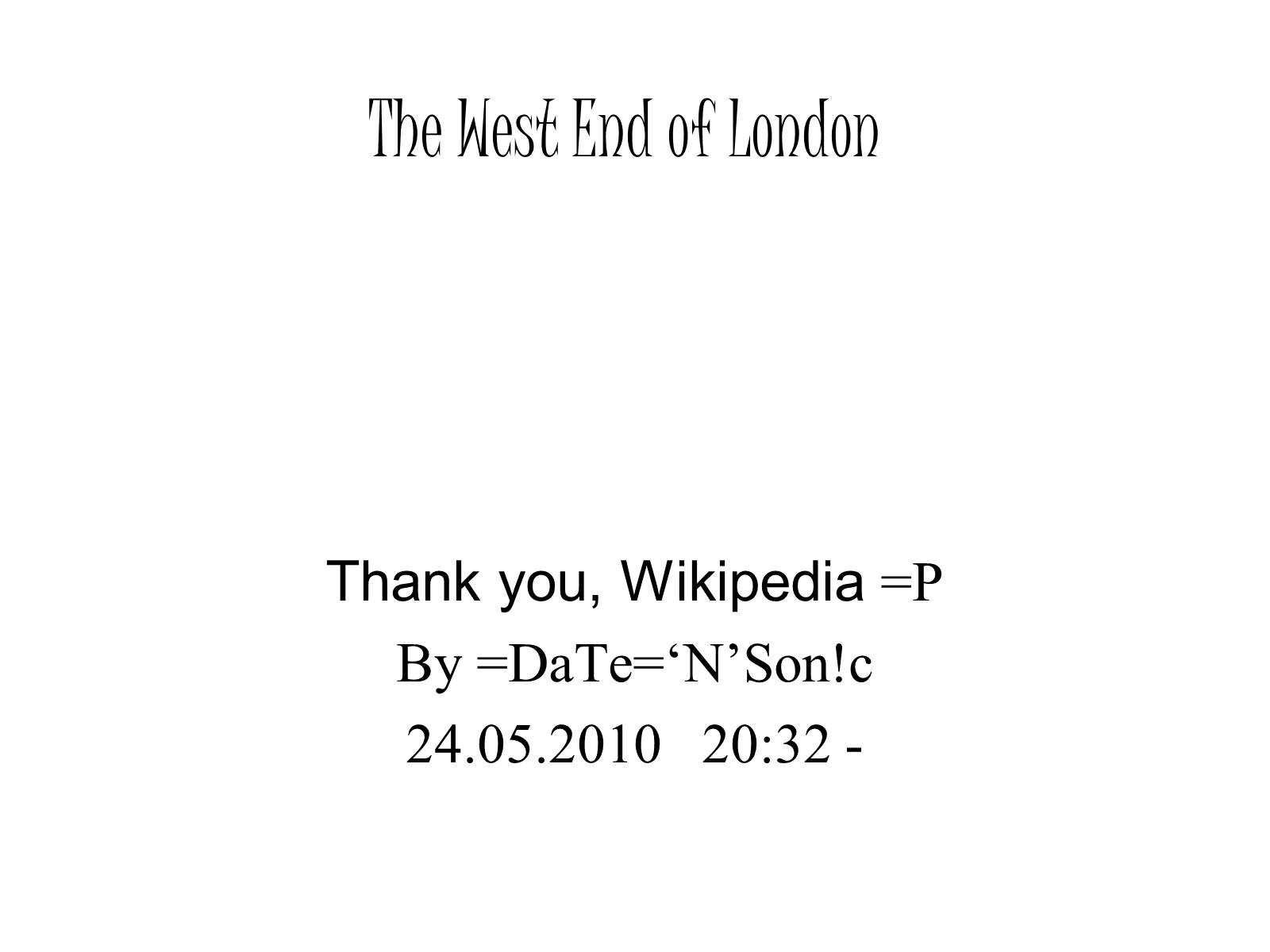
The West End of London
Thank you, Wikipedia =P
By =DaTe=‘N'Son!c
24.05.2010 20:32 -
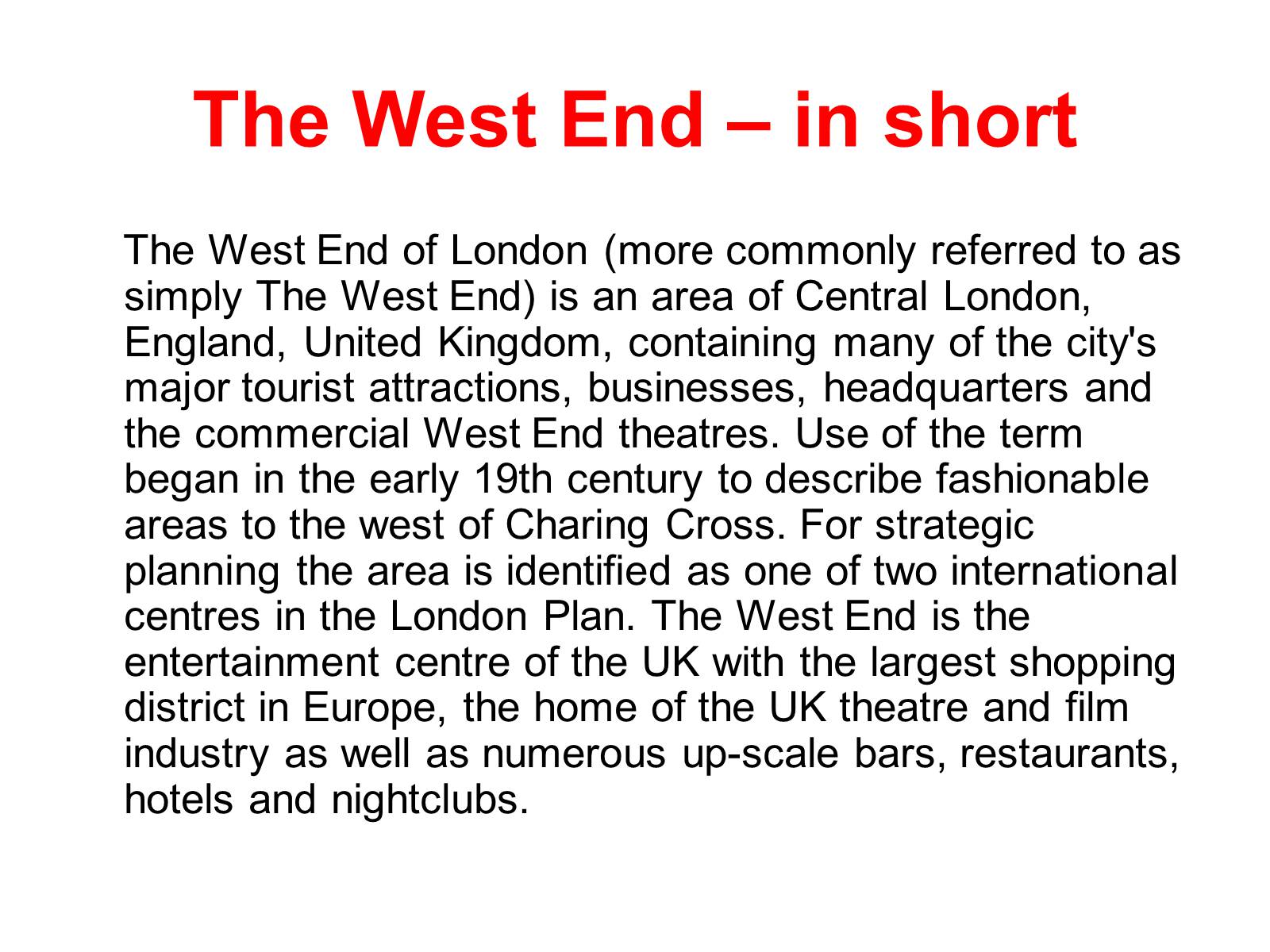
The West End – in short
The West End of London (more commonly referred to as simply The West End) is an area of Central London, England, United Kingdom, containing many of the city's major tourist attractions, businesses, headquarters and the commercial West End theatres. Use of the term began in the early 19th century to describe fashionable areas to the west of Charing Cross. For strategic planning the area is identified as one of two international centres in the London Plan. The West End is the entertainment centre of the UK with the largest shopping district in Europe, the home of the UK theatre and film industry as well as numerous up-scale bars, restaurants, hotels and nightclubs.

Location (part 1)
Located to the west of the historic Roman and Mediaeval City of London, the West End was long favoured by the rich elite as a place of residence because it was usually upwind of the smoke drifting from the crowded City. It was also located close to the royal seat of power at Westminster, and is largely contained within the City of Westminster (one of the 32 London boroughs). Developed in the seventeenth, eighteenth and nineteenth centuries, it was originally built as a series of palaces, expensive town houses, fashionable shops and places of entertainment. The areas closest to the City around Holborn, Seven Dials and Covent Garden historically contained poorer communities that were cleared and redeveloped in the nineteenth century.
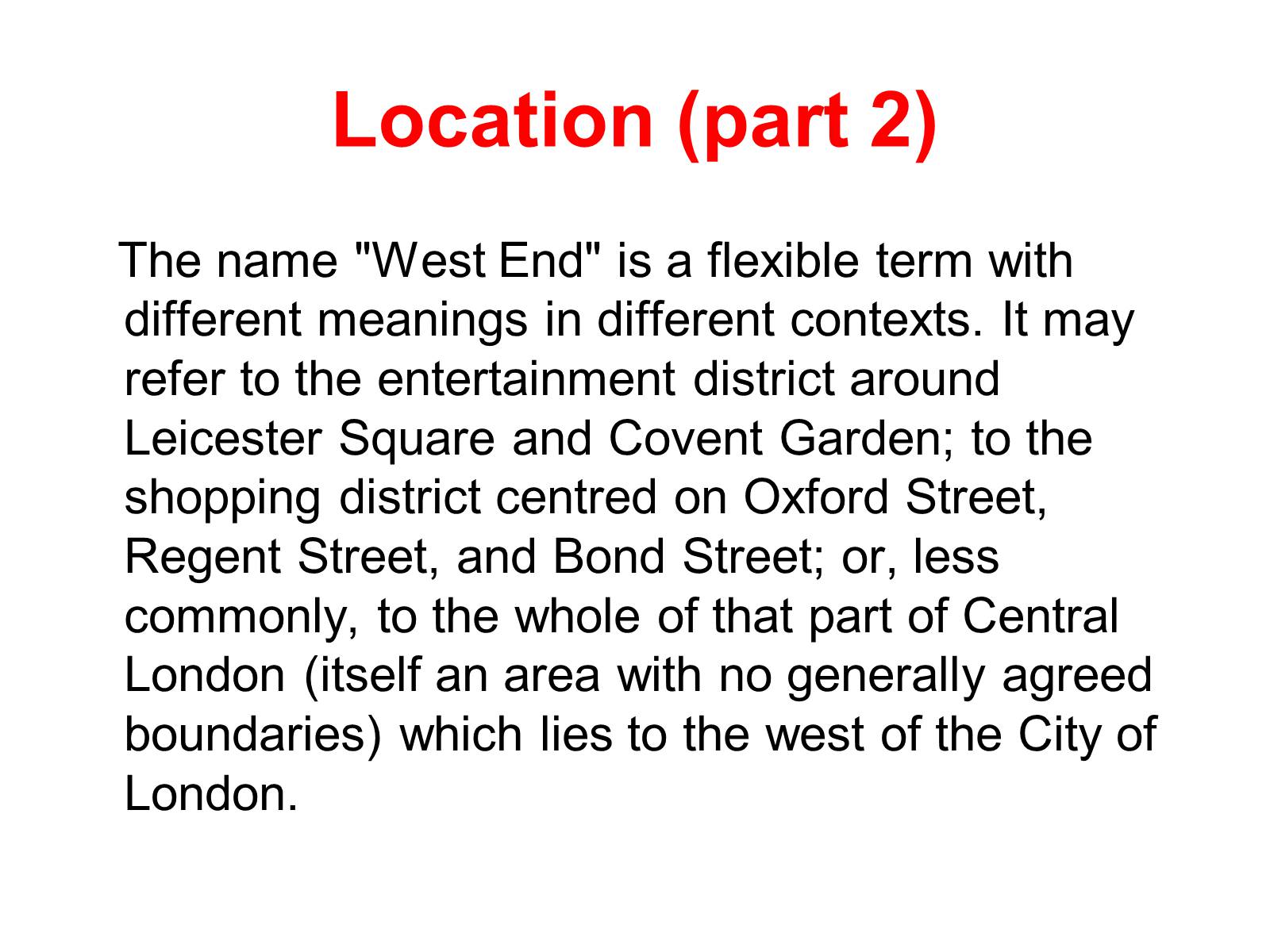
Location (part 2)
The name "West End" is a flexible term with different meanings in different contexts. It may refer to the entertainment district around Leicester Square and Covent Garden; to the shopping district centred on Oxford Street, Regent Street, and Bond Street; or, less commonly, to the whole of that part of Central London (itself an area with no generally agreed boundaries) which lies to the west of the City of London.

Ward of the City of Westminster
One of the local government wards within the City of Westminster is called 'West End'. This covers a far more narrow definition of Mayfair, Soho, and parts of Fitzrovia and Marylebone. However, in the United Kingdom, ward boundaries are generally only familiar to people involved in local politics and administration, and this ward carries little weight as an 'official' definition of the West End, and is not intended to do so.
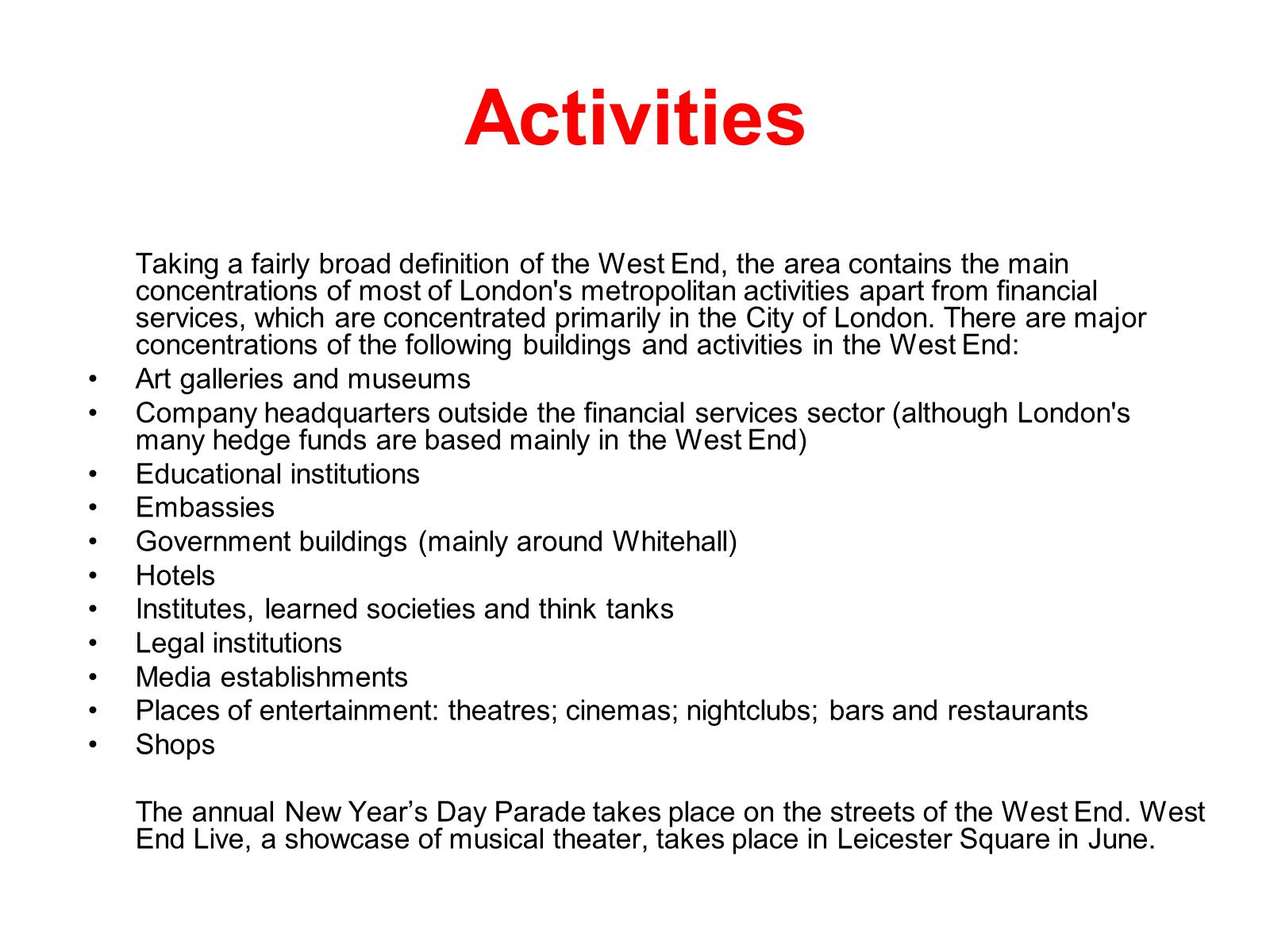
Activities
Taking a fairly broad definition of the West End, the area contains the main concentrations of most of London's metropolitan activities apart from financial services, which are concentrated primarily in the City of London. There are major concentrations of the following buildings and activities in the West End:
Art galleries and museums
Company headquarters outside the financial services sector (although London's many hedge funds are based mainly in the West End)
Educational institutions
Embassies
Government buildings (mainly around Whitehall)
Hotels
Institutes, learned societies and think tanks
Legal institutions
Media establishments
Places of entertainment: theatres; cinemas; nightclubs; bars and restaurants
Shops
The annual New Year's Day Parade takes place on the streets of the West End. West End Live, a showcase of musical theater, takes place in Leicester Square in June.

Her Majesty's Theatre in Haymarket
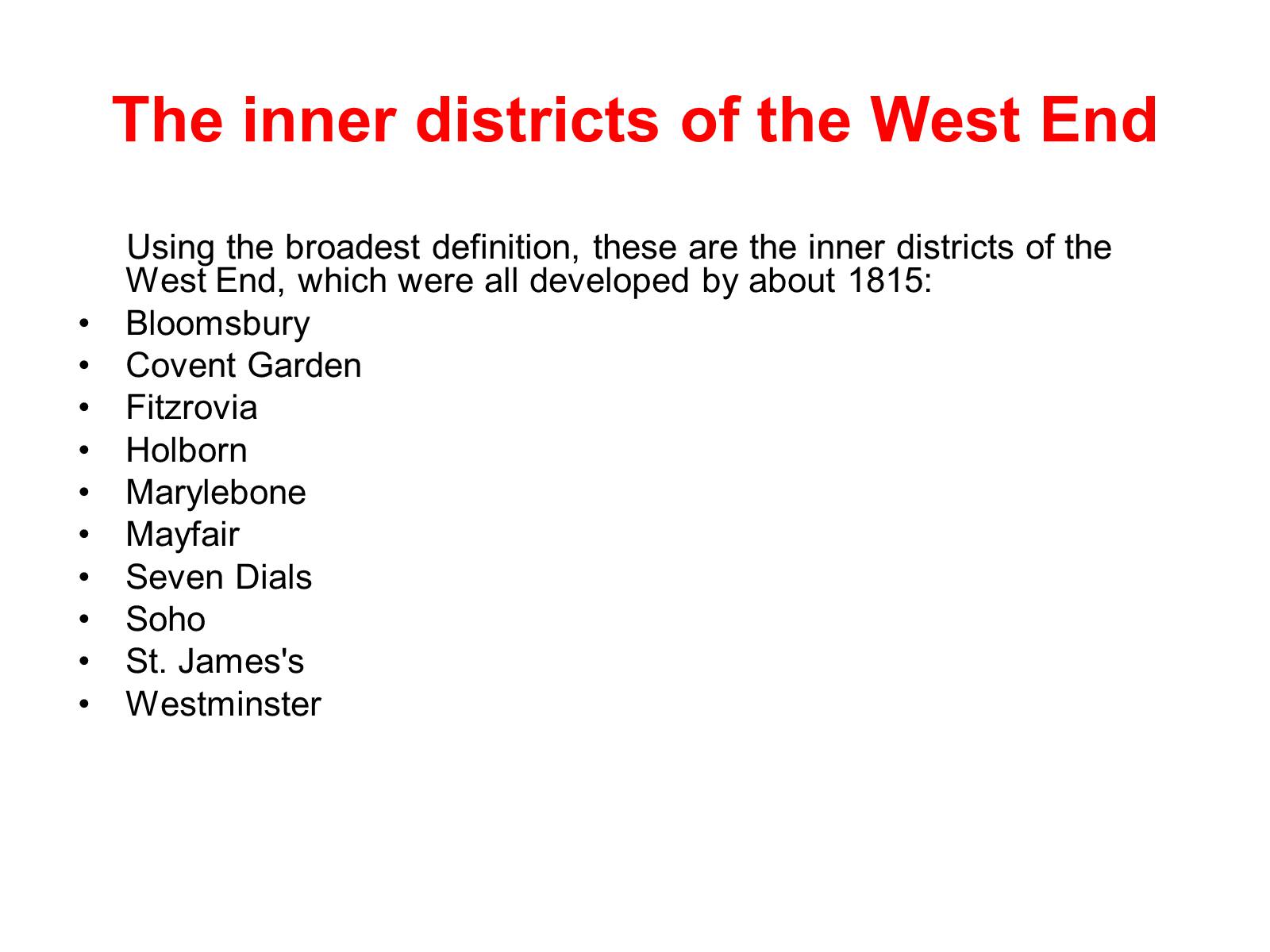
The inner districts of the West End
Using the broadest definition, these are the inner districts of the West End, which were all developed by about 1815:
Bloomsbury
Covent Garden
Fitzrovia
Holborn
Marylebone
Mayfair
Seven Dials
Soho
St. James's
Westminster
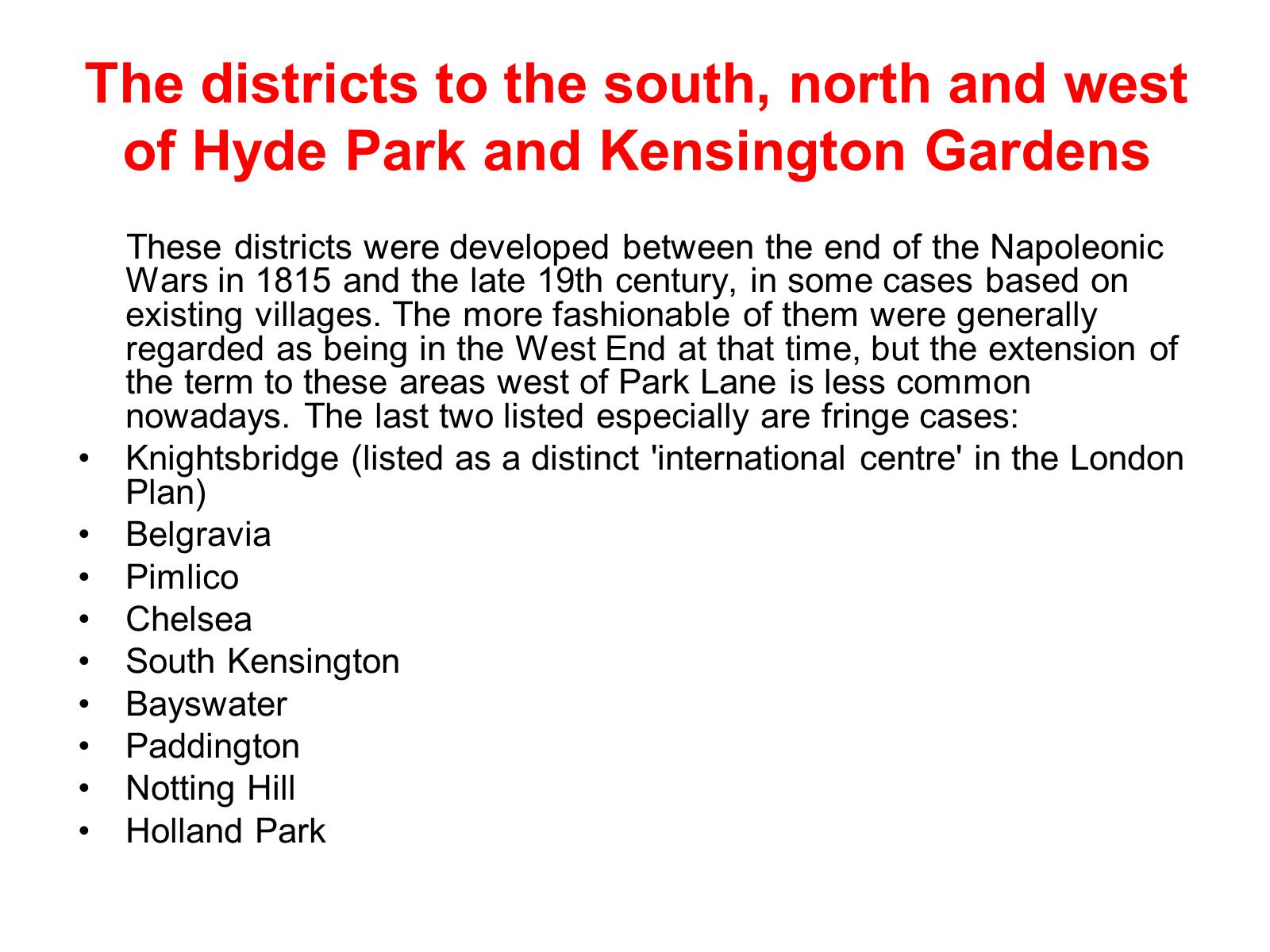
The districts to the south, north and west of Hyde Park and Kensington Gardens
These districts were developed between the end of the Napoleonic Wars in 1815 and the late 19th century, in some cases based on existing villages. The more fashionable of them were generally regarded as being in the West End at that time, but the extension of the term to these areas west of Park Lane is less common nowadays. The last two listed especially are fringe cases:
Knightsbridge (listed as a distinct 'international centre' in the London Plan)
Belgravia
Pimlico
Chelsea
South Kensington
Bayswater
Paddington
Notting Hill
Holland Park
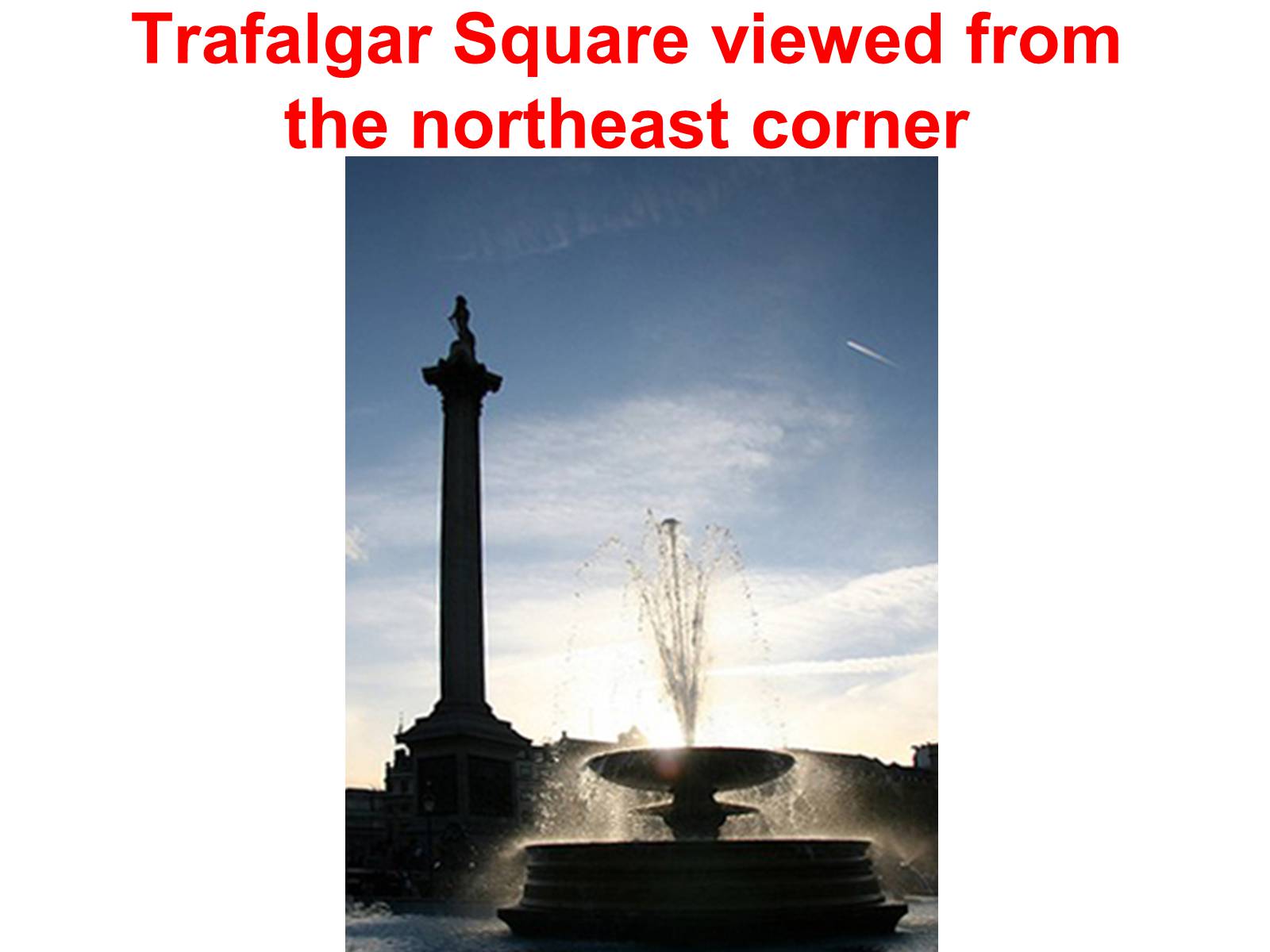
Trafalgar Square viewed from the northeast corner
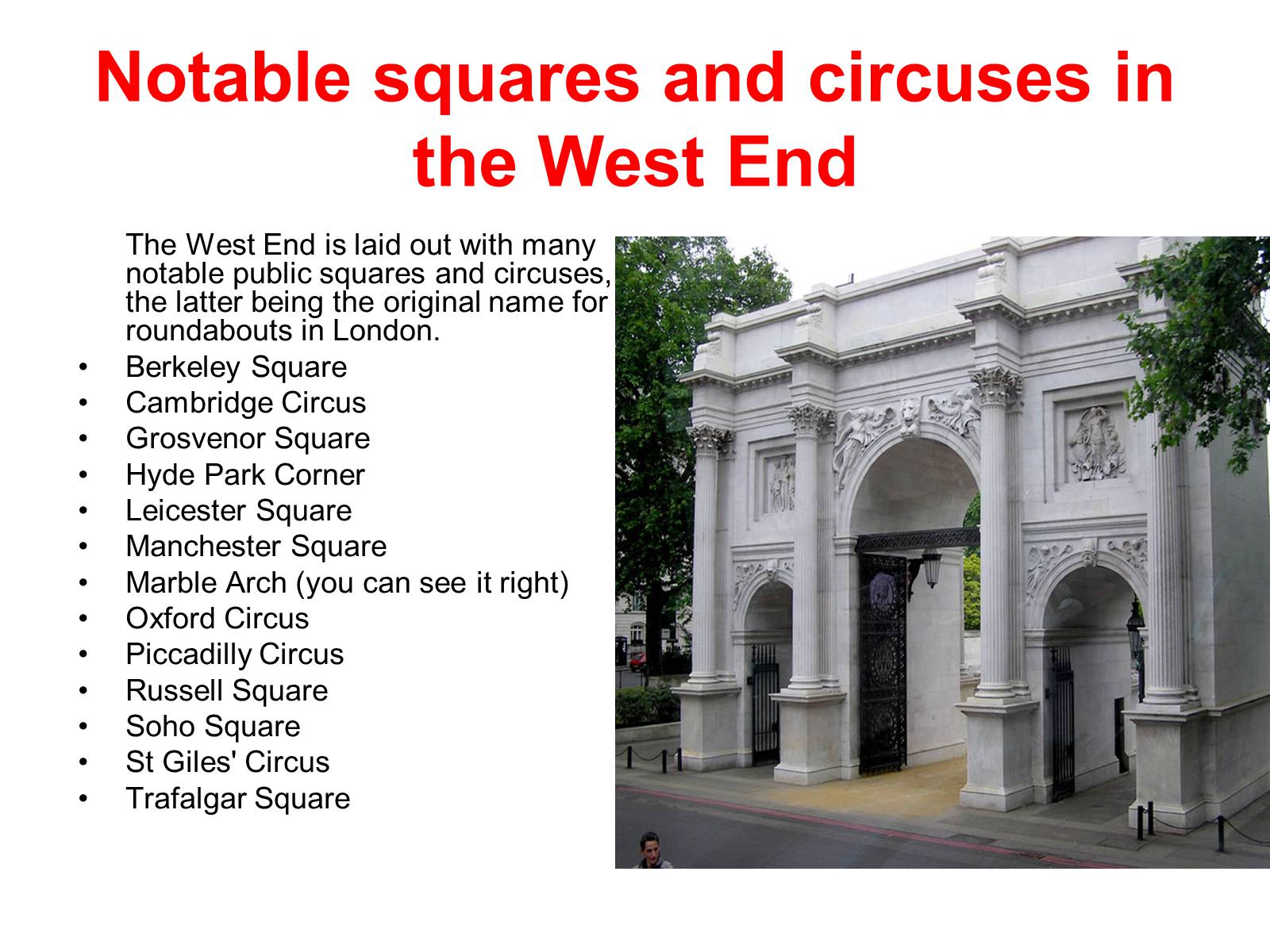
Notable squares and circuses in the West End
The West End is laid out with many notable public squares and circuses, the latter being the original name for roundabouts in London.
Berkeley Square
Cambridge Circus
Grosvenor Square
Hyde Park Corner
Leicester Square
Manchester Square
Marble Arch (you can see it right)
Oxford Circus
Piccadilly Circus
Russell Square
Soho Square
St Giles' Circus
Trafalgar Square

Education
The City of Westminster operates the Charing Cross Library with the Westminster Chinese Library. A lot of students go there and do their homework at that famous library.